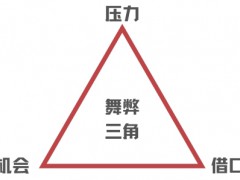???? 據3月18日MENAFN消息:總部位于挪威的能源研究和商業情報公司Rystad Energy援引趨勢報告稱,2021年可再生能源項目的資本支出將創下新紀錄。
????該公司預計可再生能源的資本支出將達到2430億美元,而石油和天然氣行業的資本支出為3110億美元。
????Rystad Energy預計,大部分可再生能源支出將用于陸上風力項目,從去年的940億美元增加到1000億美元。太陽能光伏支出預計將從去年的880億美元攀升至今年的960億美元,而海上風電的資本支出將從430億美元增長至460億美元。
????大部分支出來自亞洲,截至2021年1月,亞洲在建裝機容量為156吉瓦,其次是歐洲,為32吉瓦。
????該公司的分析顯示,盡管2020年以油氣為主的業務收入比前一年平均下降23%,但以風能和太陽能光伏為主的業務銷售額增長了18%。
????受上游業務影響的服務公司季度營收大幅下滑,由于缺乏新合同和積壓工作執行緩慢,去年第四季度營收較上年同期下滑25%。去年油井服務和地震部門的收入比2019年下降35%,鉆井工具收入減少25%。
????與2019年相比,去年第四季度風電和太陽能行業的服務公司實現了增長,風電項目的服務公司收入同比增長15%,全年收入增長20%。太陽能項目服務提供商第四季度銷售較上年同期增長3%,全年增長14%。
????馮娟 摘譯自 MENAFN
????原文如下:
????Capex for renewable energy projects set for new record in 2021
????2021 will mark a new record in the capital expenditures on renewable energy projects, Trend reports citing, Rystad Energy, a Norway-based energy research and business intelligence company.
????The company forecasts capex on renewables to reach $243 billion, as compared to $311 billion in the oil and gas sector.
????Rystad Energy expects that most of the renewable energy spending will go towards onshore wind projects, rising to $100 billion from $94 billion in 2020. Solar PV spending is expected to climb to $96 billion this year from $88 billion last year, while offshore wind will see capex grow to $46 billion from $43 billion.
????Most of the expenditure stems from Asia, which has 156 gigawatts (GW) of capacity under construction as of January 2021, followed by Europe with 32 GW. China's decision to slowly reduce subsidy assistance from January forced many projects to start construction early, which further supported spending activity. Much of the spending is down to China's 800-megawatt (MW) Rudong offshore wind farm and the 2 GW Zhuozi County Project, as well as Orsted's 1.4 GW Hornsea 2 project off the UK.
????The company's analysis reveals that while oil and gas-focused businesses on average saw revenue drop 23 percent in 2020 from the previous year, wind and solar PV-focused businesses enjoyed an 18 percent growth in sales.
????Quarterly revenue for service companies exposed to the upstream sector has seen a massive deterioration, with fourth-quarter revenue last year slumping 25 percent from a year earlier amid a lack of new contracts and slow execution of backlog work. Revenue from well services and seismic segments fell last year by 35 percent from 2019 levels, while drilling tools revenue shrank 25 percent.
????Service companies exposed to the wind and solar sectors saw growth in the fourth quarter of last year compared to 2019. Service players exposed to wind projects recorded a 15 percent year-on-year boost to revenues for the fourth quarter of 2020, with full-year revenues improving by 20 percent. Sales at service providers exposed to solar projects rose 3 percent in the fourth quarter from the year-earlier period and climbed 14 percent for the full year.
免責聲明:本網轉載自其它媒體的文章,目的在于弘揚石化精神,傳遞更多石化信息,并不代表本網贊同其觀點和對其真實性負責,在此我們謹向原作者和原媒體致以敬意。如果您認為本站文章侵犯了您的版權,請與我們聯系,我們將第一時間刪除。







